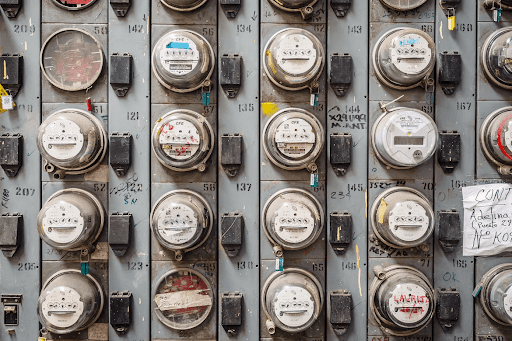
Introduction To Business Energy Meters
Last Updated on April 19, 2022 by Andrew
Energy meters are used to accurately estimate the number of bills a business should pay. These energy meters will then relay the readings to your supplier. However, if your company doesn’t have a meter, you will need to personally send the readings to your utility supplier. As a business owner, understanding these meters is critical. This guide will highlight different types of utility meters and how they are used.
Single-Rate Meters
The most commonly used meter is the single rated meter. Ideal for businesses operating from Monday to Friday (i.e., 8 am-10 pm), these meters are considered standard meters. This means that a standard flat rate is charged. The bill from these meters usually starts with the number 03.
Pro Tip: Utility Bidder gives you an easy way to compare different suppliers. Secure the best energy rates today.
Two-Rate Meters
A two-rate meter comes with two different rates. They include:
- Peak hours
- Off-peak hours
While off-peak hours attract cheaper rates, peak hours attract higher rates.
Three-Rate Meters
Three-rate meters give you an option to pay three rates. The rates are dependent on the time of use. The times are divided into three. They include:
- Day rate
- Evening/weekend rate
- Night rate
- The daytime rate is considered to be the most expensive. On the other hand, evenings and weekends attract lower rates. If you mostly consume energy at night, you will benefit from the cheapest rate.
If your business operates round the clock (such as bars, pubs, and even clubs), this is the ideal meter for you.
Half-Hourly Meters
Half-hourly meters are designed to take and send readings after every 30 minutes. If your meter is half-hourly, your bill should start with 00. If your business is large (factory, warehouse, big office, etc.), you are required to have a half-hourly meter. Also, any business that consumes more than 70Kw of electricity within 30 minutes should have a half-hourly meter.
Smart Meters
By 2025, every household in the UK will be issued a smart meter. Just like half-hourly meters, these meters automatically send the readings to the supplier on a regular basis. The readings are submitted monthly, eliminating the need to do it on your own.
Smart meters are designed with a digital display that shows the amount of energy you are using at a particular moment. Thus, they come in handy when it comes to monitoring energy usage.
Multi-Site Meters
Multi-site meters are used by businesses that operate from more than one location. These meters help consolidate all the readings, allowing you to keep track of energy usage from these different locations.
Multi-site energy deals will combine the energy tariffs into a single package under one supplier. This simplifies the energy management process. It can also save you a lot of money.
MPAN and MPRN
MPAN and MPRN, which are found in your bill, are important details needed when switching an energy supplier. Thus, before switching have these details ready.
The Bottom-Line
Utility meters come in different types. Common ones include two rated, single rated, multi-site meters, etc. The above guide highlights each of these meters and how they are used.




